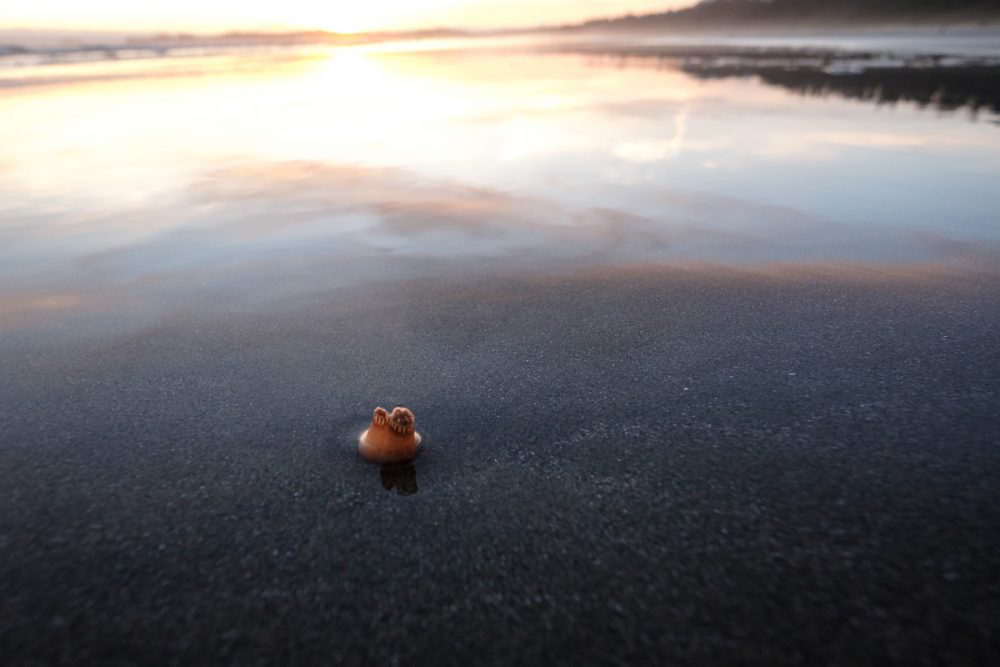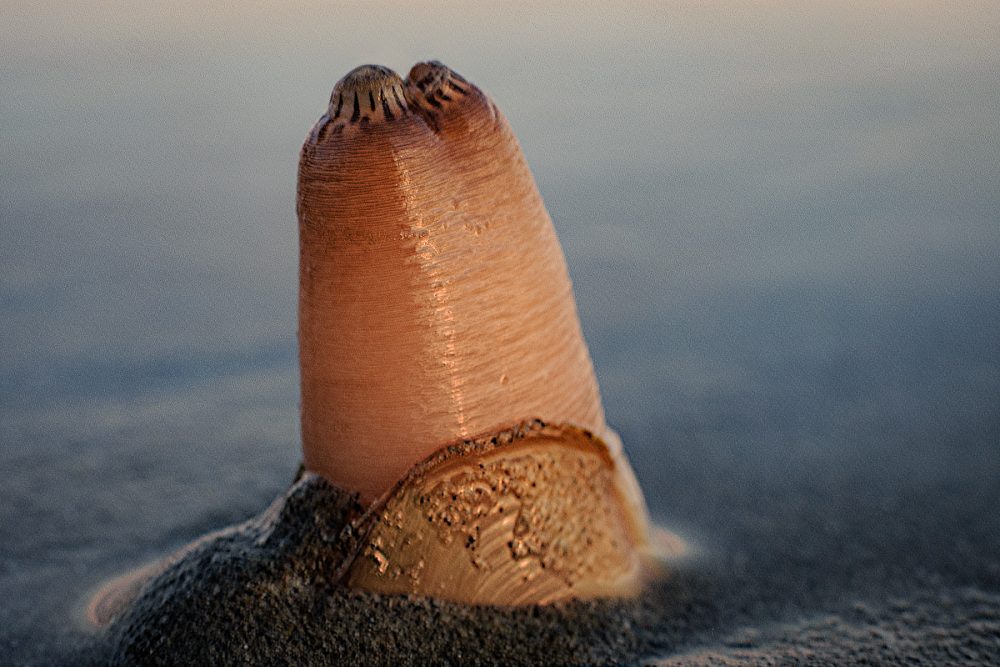Razor clams (Siliqua patula) are the signature shellfish associated with the west coast and Pacific Rim National Park Reserve. The long, exposed sandy beaches are perfect habitat for this surf-loving clam. In the national park, the stretch of Long Beach between Green Point and Schooner Cove is prime Pacific razor clam habitat. While live clams are difficult to view, if your timing is good and you’re actively looking, it is possible to see these amazing bivalve mollusks.
Looking for the Show
Razor clams spend most of their time underneath the sand, protected from predators and the harsh environment. As a result, it is usually easier to look for the show than the clam itself. Typically, a hole in the sand or a small mound of sand that looks like a volcano is a sign that there is a clam underneath the surface. Occasionally, you see the tips of the clam’s siphon poking up through the sand to the surface. Razor clams are also more likely in the mid to low tide zones of the beach. Make sure to check your tide table to ensure that you time your visit well!

Fast Diggers!
If you’re lucky, you might find more of the clam on the surface! In the wet sand of a dropping tide, my kids and I saw several razor clams that were out on the sand. This gave us a unique opportunity to see more of the clam and its features. Razor clams can dig at speeds of up to 20cm/minute to depths of 25cm under the sand. In addition, they are hard to dig up and their shells are fragile. The possibility of damaging the clam is minimal if they are already on top of the sand.

Placing a live razor clam on the wet sand is a fascinating thing to watch. The clam in the photograph above was about 7 cm in length, smaller in size than 16cm long adult razor clams. The extended siphon was about the same length as the shell. Once on the surface, the razor clam began to dig rapidly. It was completely buried in less than a minute, with no sign of that the mollusc had ever been there. Check out this YouTube video that shows a razor clam going from the surface to almost completely buried!
Identifying Features of Razor Clams

In most cases, you’re going to find the shells of clams rather than live clams. Razor clam shells are long and narrow and quite fragile compared to the valves of other shellfish, breaking easily under foot or by hand. Shells reach lengths of up to 16cm.

The Pacific razor clam gets its name from the sharp edge of the thin shell. In addition, the shape of the shell looks a little like an old fashion straight razor. A distinctive peeling varnish-like periostracum covers the outer surface of the shell. Over time, the inner shell loses the purple tint and becomes a pure white and the outer varnish wears off.

On the surf pounded west coast of Vancouver Island, Pacific razor clams are a unique species. While you may not be able to find a live razor clam during your visit to Pacific Rim National Park Reserve, you’ll definitely find the empty shells of these amazing bivalves. Remember that collection of shells is prohibited in this national park. Take a photograph and leave the shells for others to find and to break down and add valuable calcium to the harsh beach ecosystem.